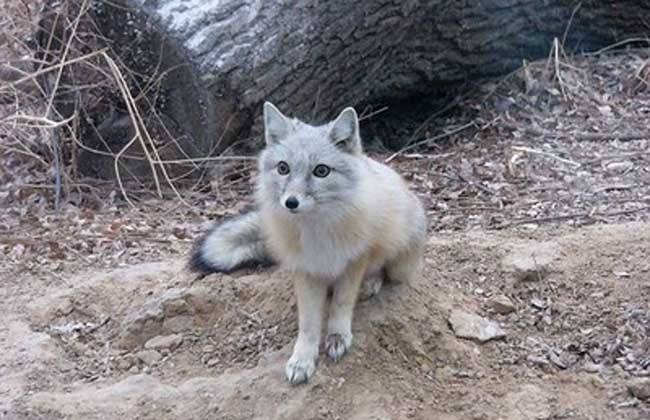Corsac Fox
IUCN
LCBasic Information
Scientific classification
- name:Corsac Fox
- Scientific Name:Vulpes corsac, Eastern Coral Fox
- Outline:Carnivora
- Family:Carnivora Canidae Vulpes
Vital signs
- length:50-60cm
- Weight:2-3kg
- lifetime:9-12year
Feature
It is a long-legged, reddish-gray fox.
Distribution and Habitat
Distributed in Afghanistan, China, India, Iran, Kazakhstan, Kyrgyzstan, Mongolia, Russia, Turkmenistan, and Uzbekistan.
Main distribution areas in China: Xinjiang, Qinghai, Gansu, Ningxia, Inner Mongolia, and Tibet.
Mainly inhabits dry grasslands, deserts, and semi-desert areas, away from farmland, forests, and bushes. They like to live in grasslands and semi-deserts, and originally originated from the Mongolian grasslands. They wander around and have no fixed living area. In the winter snow season when it is difficult to find food, they will migrate south.
Appearance
It is a long-legged, reddish-gray fox. It has a short face and pointed snout, large and pointed ears, a wide ear base, and well-developed capillaries. The back is light brown-gray or light reddish-brown, with a silver base. The chin to the chest and abdomen are pale white to yellow. The fur color is light sandy brown to dark brown, darker on the head and cheeks, gray-brown on the back of the ear shell and the outside of the limbs, white on the lower abdomen and the inside of the limbs, and the fur color of the base of the tail is similar to that of the back, and the terminal half is gray-black. The fur color in summer is close to light red.
Compared with foxes of the same genus, the sand fox has smaller teeth, the small tips on the sides of the upper incisors are almost non-existent, and the outer incisors have a slight gap with the other incisors and are slightly backward.
The width of the sand fox's food niche varies with the seasons, and there is no significant difference
Details
Corsus foxes are slightly smaller than red foxes and as tall as a medium-sized dog. There are three subspecies.

Corsus foxes live adjacent to other burrowing animals and take over vacant burrows. They are very active during the day, but there are also reports of nocturnal activity. Good at climbing, medium speed, not as fast as other slow dogs. Hearing, vision and smell are all sensitive. They wander around without a fixed living area. In the winter snow season when it is difficult to find food, they will migrate south. Compared with other foxes, corsus foxes are more gregarious, and even multiple individuals live in the same cave. In winter, corsus foxes form small foraging groups, with spouses and adult children in the group. They live in adjacent caves similar to "corsus fox cities", which are often taken over from other animals, such as marmots. The caves dug by corsus foxes are usually simple and not deep.
Corsus foxes are very good at catching rodents. They first jump into the air and then pounce on their prey. The prey rarely has a chance to escape. With a pair of wide ears, they can accurately locate the running direction of the prey. The most difficult way for corsus foxes to escape from their natural enemies is to run. They run so slowly that a slow dog can catch them. The main predators of the Corsac fox include the caracal and the African eagle owl; other animals such as jackals, hyenas and samoyed dogs may also prey on the Corsac fox.
Hunting of the Corsac fox is regulated by law in some countries, and the species is considered a fur hunting species in some countries (Russia, Kazakhstan, Turkmenistan, Uzbekistan, Mongolia). In Russia, Kazakhstan and Turkmenistan, a trapping/hunting period is allowed from November to March. Certain hunting methods are prohibited, such as digging animal dens, flooding and poisoning. Threats have also increased with human activities and have led to a declining trend in the species in some areas. As of 2016, the species' overall survival is not threatened, but monitoring levels should be strengthened to observe the impact of illegal trade and landscape development on the survival of the species.
The Corsus fox has been included in the "National List of Terrestrial Wildlife with Important Economic and Scientific Research Value" issued by the State Forestry Administration of China on August 1, 2000.
Listed in the 2014 Red List of Endangered Species of the World Conservation Union (IUCN) ver 3.1 - Least Concern (LC).
Listed in the second level of the "National Key Protected Wildlife List of China".
Protect wild animals and stop eating game.
Maintaining ecological balance is everyone's responsibility!








